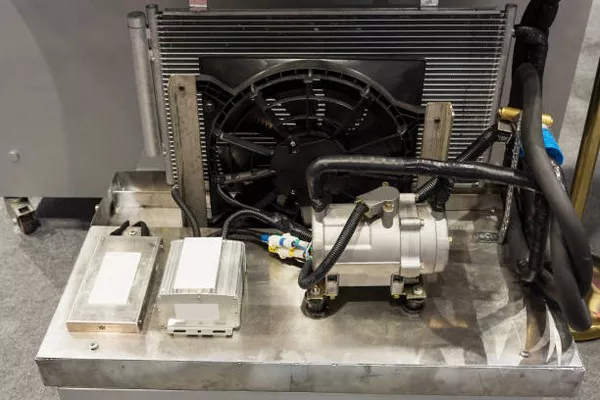In a world increasingly reliant on uninterrupted power supply, the synergy between an Automatic Transfer Switch (ATS) and a generator stands out as a critical component of maintaining seamless electrical power during grid outages. An ATS serves as a key intermediary between the primary power source and the backup generator, ensuring a swift and automatic transition between the two power sources. This article delves into the intricacies of an ATS and its symbiotic relationship with a generator, shedding light on its inner workings, benefits, and applications.
Understanding the Automatic Transfer Switch (ATS)
At the heart of a resilient backup power system lies the Automatic Transfer Switch, a device engineered to instantly shift the load from the main power grid to a backup generator in the event of a power disruption. The primary objective of an ATS is to facilitate this transition seamlessly, without any manual intervention. It achieves this by constantly monitoring the incoming voltage from both sources and intelligently deciding when a switch is warranted.
The ATS is equipped with a dual set of power contactors – one for the utility power and another for the generator. During normal operation, the ATS maintains a connection with the utility power and keeps the generator contactor open. In the event of a power outage or a voltage drop below a predefined threshold, the ATS detects the discrepancy and triggers a sequence of actions to ensure uninterrupted power supply.
Working Principle of an ATS with a Generator
Monitoring: The ATS vigilantly monitors the incoming utility power voltage. It is calibrated to sense even minor fluctuations that could disrupt the power supply.
Detection of Disruption: When the ATS detects a deviation from the standard voltage range or a complete power outage, it initiates the transfer process. This detection is swift, often within milliseconds, ensuring minimal interruption to the connected devices.
Engagement of Backup Generator: Upon detecting a power disruption, the ATS signals the backup generator to start. Modern ATS units can also communicate with generators through electronic control systems, enabling a seamless and rapid response.
Load Transition: Once the generator is up and running, the ATS ensures that it reaches a stable operating condition. It then instructs the utility power contactor to open and the generator contactor to close, transferring the load to the backup generator.
Monitoring Resumption: After the load has been successfully transferred to the generator, the ATS continues to monitor the utility power. When the utility power is restored and stabilizes within the acceptable voltage range, the ATS prepares for the retransfer process.
Revert to Normalcy: As the utility power becomes steady, the ATS orchestrates a reverse transition. It instructs the generator contactor to open and the utility power contactor to close, ensuring a seamless return to the primary power source.
Benefits of an ATS in Conjunction with a Generator
Uninterrupted Power Supply: The primary benefit of an ATS and generator combination is a seamless transition from grid power to generator power, ensuring continuity of power-sensitive operations.
Automated Operation: Manual intervention during power outages is eliminated. The ATS ensures that the transition between power sources occurs automatically, reducing downtime and minimizing the impact of outages.
Precision and Speed: With detection and switching times measured in milliseconds, ATS units guarantee that power disruptions are nearly imperceptible to connected devices.
Protection against Voltage Fluctuations: The ATS is engineered to respond not only to complete power outages but also to voltage fluctuations. This added layer of protection safeguards devices from potential damage caused by sudden voltage changes.
Preservation of Generator Lifespan: The ATS prevents scenarios where a generator could run unnecessarily, thereby conserving fuel and extending the generator’s operational lifespan.
Applications of ATS and Generator Combinations
Critical Infrastructure: Industries such as healthcare, data centers, and telecommunications rely heavily on continuous power to maintain operations. ATS units coupled with backup generators are indispensable in these sectors, ensuring that vital equipment remains functional during power outages.
Residential Backup Power: Homes equipped with backup generators benefit from ATS units by enabling a smooth transition to generator power in the event of grid failures, providing homeowners with uninterrupted comfort and safety.
Commercial Establishments: Retail outlets, office buildings, and manufacturing facilities can maintain business continuity using an ATS and generator combination, preventing financial losses due to power interruptions.
Emergency Services: Police stations, fire departments, and emergency response centers rely on constant power supply for effective operations. ATS units and backup generators ensure uninterrupted communication and coordination during crises.
Conclusion
In an age where power reliability is paramount, the collaboration between an Automatic Transfer Switch (ATS) and a generator stands as a beacon of dependable power supply. The ATS, with its sophisticated monitoring, detection, and switching capabilities, ensures a seamless transition from grid power to generator power and back, safeguarding critical operations from any interruption. The partnership between an ATS and generator finds applications in a wide spectrum of sectors, including critical infrastructure, residential spaces, commercial establishments, and emergency services. As technology continues to advance, the role of the ATS and generator duo remains pivotal in upholding the continuity of essential services, providing peace of mind to individuals and organizations alike.

